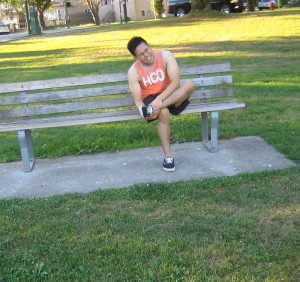Many runners suffer from knee pain at some point in their lives especially if they run on hard surfaces such as asphalt and concrete. Most of this pain is linked to the high-impact nature of running which transmits shockwaves to the lower body that leads to the compression of the bone and cartilage against one another. Over a span of time and lack of proper care to the body, running can eventually wear down the knee, ankle and hip joints. The meniscus is a structure in the knee that is specifically designed to prevent this, but it is not immune to injuries.
What is the function of the meniscus?
The main function of the meniscus in the knee is to absorb shock inside the knee. It is a crescent-shaped disc of connective tissue positioned between the tibia and femur and just beneath the patella. This prevents the large bones that meet in the knee joint from directly grinding against each other and it also improves stability in the joint. Always bear in mind that this pad is vital to runners who depend on the meniscus to absorb shock while running as well as keep the joint from producing pain and friction.

What are the possible problems?
Most cases of knee pain involving the meniscus is linked to a tear. This is not necessarily a straight tear since wearing of the tissue edges can also occur. In most cases, the individual might still utilize the joint once the initial injury occurs.
Many seasoned athletes continue to play despite having a torn meniscus when the initial injury occurs. After a few days, the individual will experience swelling and immobility of the joint. Running is not considered as a typical cause of knee pain, but damage or injuries to the knee can oftentimes result to tears. The knees can become twisted if the individual steps wrongly or on loose footing. It is also possible for wear and tear in the knee joint to steadily wear at the meniscus, especially among older adults. If not properly treated, part of the meniscus can float out into the joint and result to slipping, locking and popping of the joint.
What are the symptoms?
A meniscus tear is characterized by stiffness, pain and swelling in the joint. The individual can experience locking of the knee which depends on how it was damaged or there is difficulty in bearing weight. In most cases, the range of motion in the knee is reduced. Remember that running is likely to be painful or hard to perform at all especially if the injury is limiting the range of the stride.
Treatment
The treatment is based on the severity of the condition. MRI or X-ray can be used by the doctor to assess the severity of the injury. In case the tear occurs at the outer-third of the tissue, surgical intervention might be needed. The tears on the interior of the meniscus often need surgery and then followed by rehabilitation before he/she can resume running.
